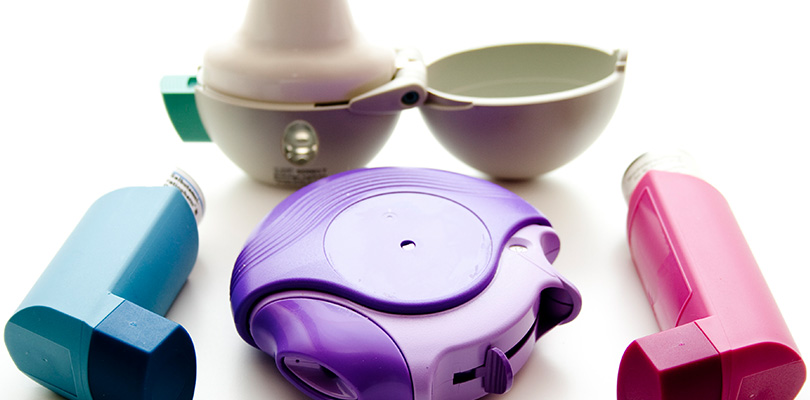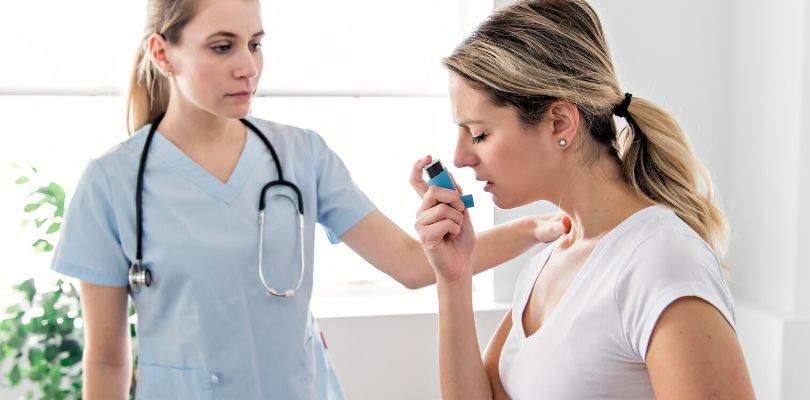Emphysema vs. COPD
COPD and emphysema are often used interchangeably when talking about obstructive lung disease. There is some confusion on whether they are the same thing. The answer is not exactly. Continue reading to learn what’s involved in each condition.
What Is COPD?
COPD, which is short for chronic obstructive pulmonary disease, is the term used to describe different chronic diseases of the lungs.
COPD includes chronic bronchitis, emphysema, bronchiectasis, and some doctors also include asthma. Regardless of which type of COPD you have, it interferes with normal breathing. In many cases, COPD is progressive and permanent.
According to the Centers for Disease Control and Prevention, COPD is the third most common cause of death in the United States after heart disease and cancer. It is also the second leading cause of disability. Other causes of death have decreased. But COPD has increased since 2007.
What Is Emphysema?
Emphysema is a type of COPD. In people that have emphysema, part of what happens is the small air sacs in their lungs called alveoli become damaged. The damage causes the alveoli to lose their elasticity.
The damaged alveoli also cannot support the bronchial tubes as efficiently. The damage makes getting air out of the lungs difficult.
Are COPD and Emphysema the Same Thing?
Although diseases, such as emphysema are sometimes called COPD, the two conditions are not synonymous. A person can have COPD and not have emphysema. For instance, they could have chronic bronchitis or a certain type of bronchiectasis.
Emphysema vs. COPD: Similarities and Differences
In some cases, there are a few differences between COPD and emphysema. Depending on the form of COPD a person has, symptoms may vary a little.
For example, people with chronic bronchitis might have symptoms that differ slightly from people that have emphysema. Both conditions are classified as COPD, but symptoms may vary a little.
But there are more similarities than differences between emphysema and COPD. For instance, the cause is often the same. Typically, COPD and emphysema occur due to damage to the airways, which makes breathing progressively more difficult.
Symptoms of Emphysema and COPD
The symptoms of COPD and emphysema are usually the same. Regardless of what form of COPD a person has symptoms may include:
- Shortness of breath
- A cough
- Wheezing
- Tightness in the chest
- Increased mucus production
- Fatigue
- Frequent respiratory infections
Symptoms of all forms of COPD tend to get worse over time. Because the symptoms are similar in emphysema and other forms of COPD including chronic bronchitis and bronchiectasis it can be challenging at first to make a diagnosis.
Also, it’s possible to have more than one type of COPD. For example, some people may have emphysema and chronic bronchitis.
How Does a Doctor Diagnose COPD or Emphysema?
As with most medical conditions, a physical exam and medical history help diagnose COPD and emphysema. Smoking history is also reviewed.
Emphysema and all other forms of COPD are typically diagnosed using the same tests. The tests may include the following:
Although COPD is currently not curable, it can be managed with multiple different medication options. See what the medications for COPD are here.
- Arterial Blood Gas: An arterial blood gas measures the acidity of the blood, the oxygen level, bicarbonate, and carbon dioxide. People with emphysema may have high carbon dioxide levels since they have trouble getting air out of the lungs.
- Pulmonary Function Test: A pulmonary function test is helpful to distinguish between different forms of COPD. The test measures different factors including how much air a person can get out of their lungs.
- Alpha-1-Antitrypsin Level: Alpha-1-antitrypsin is a protein that protects the lungs. Alpha-1-antitrypsin deficiency is an inherited condition in which the protein is lacking. People with alpha-1-antitrypsin deficiency are at risk of developing COPD. A blood test to check levels of alpha-1-antitrypsin may be helpful in diagnosing COPD in some cases.
- Chest X-Ray: A chest x-ray is often used to rule out certain conditions, such as lung infections. It may also be helpful to diagnose COPD.
Do COPD and Emphysema Have Different Causes?
Usually, COPD and emphysema can develop for the same reasons. The most common causes of all forms of COPD is cigarette smoking or exposure to secondhand smoke.
Other causes of emphysema can include alpha-1-antitrypsin deficiency and inhaling toxic substances. Bronchiectasis may also have additional causes. It can develop as a result of certain inflammatory diseases, such as rheumatoid arthritis.
Is COPD or Emphysema Curable?
Unfortunately, there is currently no cure for any form of COPD including emphysema. Research continues for new treatments including stem cell research that hopefully in the future will result in a cure.
In the meantime, early diagnosis allows for treatment to start as soon as possible, which may help slow the progression of the disease and improve quality of life.
Treatment for Emphysema and COPD
Treatment recommended may vary slightly depending on what form of COPD a person has.
The differences in treatment might mostly involve specific medications prescribed. But usually, emphysema and COPD are treated the same way.
The following treatments may be recommended for all forms of COPD:
- Medications: Medication is usually prescribed to treat emphysema and other forms of COPD. Medication may include bronchodilators to open the airways, steroids to decrease inflammation, and antibiotics to treat an infection.
- Self-Care: Regardless of whether a person has emphysema or some other form of COPD, self-care is essential. Self-care includes eating a healthy diet including plenty of lean protein, veggies, and fruit. Getting enough rest, avoiding pollutants, and not smoking are also part of a COPD self-care program.
- Exercise: Although exercise may seem as if it would be difficult with breathing problems, it is often helpful for people that have COPD and emphysema. Regular exercise can improve heart health and improve muscle tone and balance.
- Mucus Clearing Devices: Some forms of COPD may increase mucus production. Mucus clearing devices are used to help break up the mucus and cough it out of the lungs more effectively
- Pulmonary Rehab Classes: Pulmonary rehabilitation classes are helpful for people with all forms of COPD. Classes combine exercise and education on lung disease and include topics, such as breathing exercises and proper nutrition to manage lung disease.
- Oxygen Therapy: Oxygen therapy may be needed for some people with COPD that have low oxygen levels. Oxygen therapy might decrease shortness of breath and improve fatigue.







